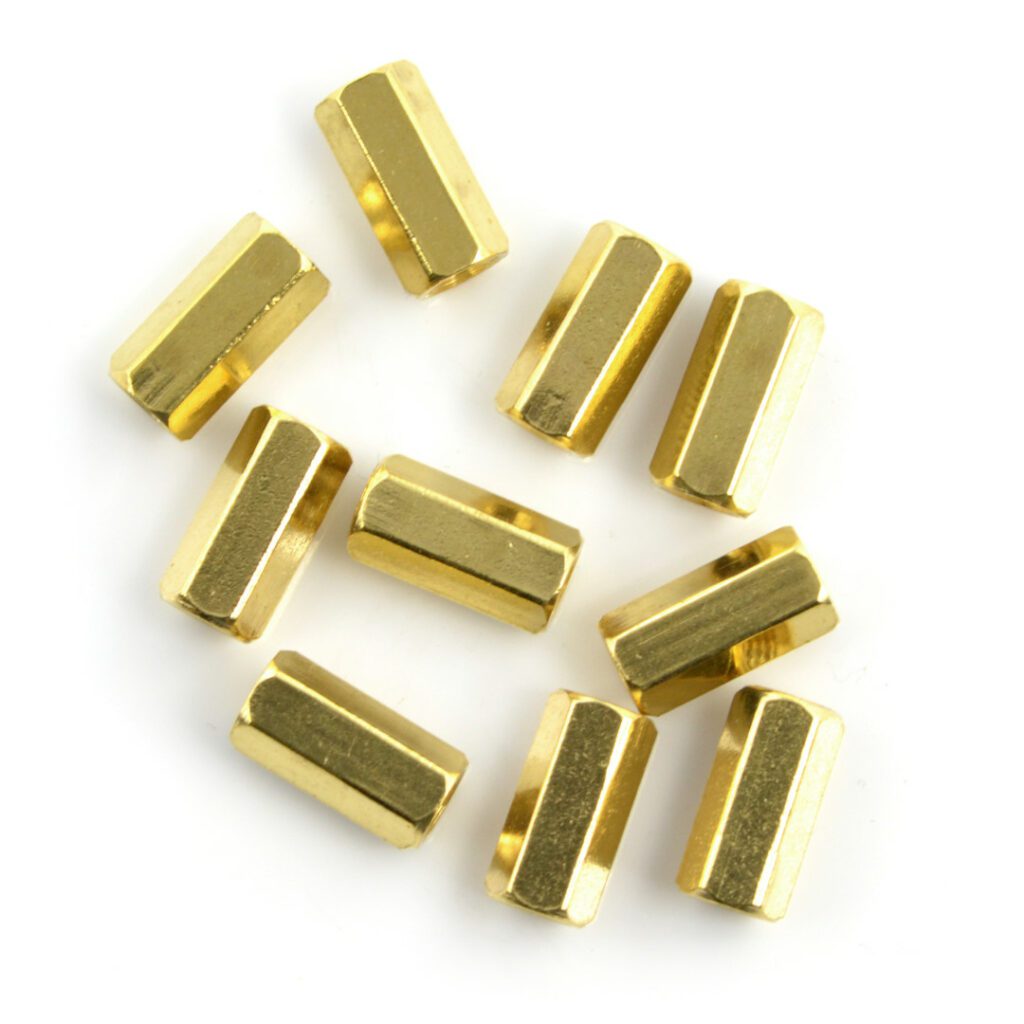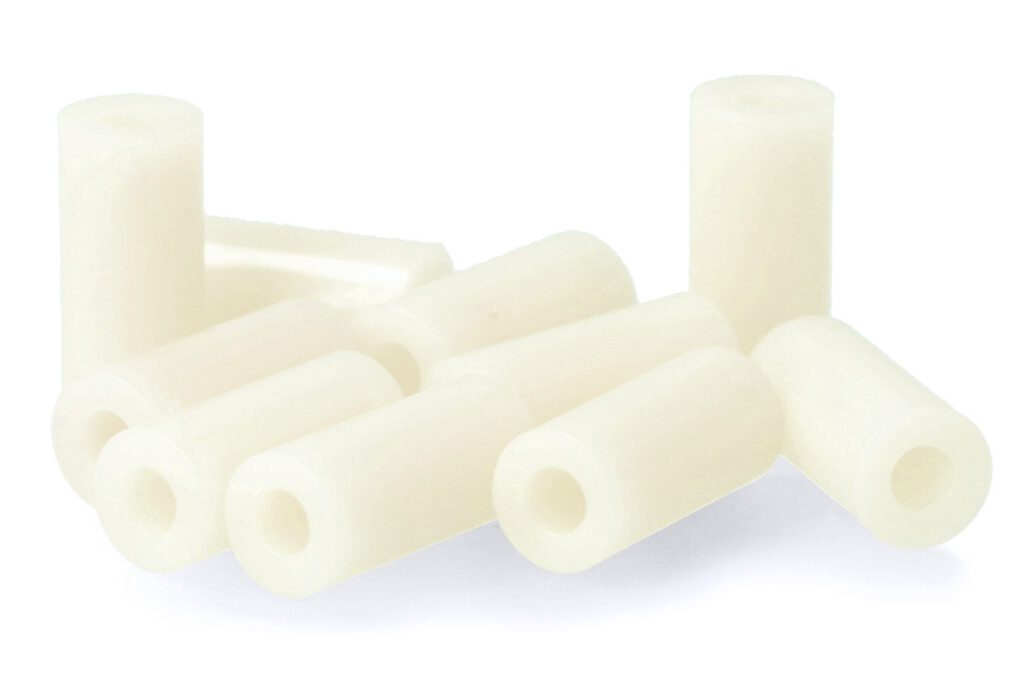Table of Contents:
Curious about what spacers are and their role in practical applications? This article provides basic information about bushings, their types and what functions they perform in various types of structures and equipment. Learn about their applications in electronics, industry and more. Learn how to choose the right ones for your needs. As you read on, you will discover the importance of these small elements and how they can affect the quality and durability of your work.
Spacers - what are they actually used for?
Spacer sleeves are small but extremely important components in many structures and machines. Their main task is to create the required gap between two components, so they ensure smooth and stable operation of mechanisms, minimizing the risk of damage, friction or other interference. The use of spacers is the simplest solution if you want to refine the space between surfaces, while avoiding the risk of overloading and deformation.
Spacer sleeves play a key role in a number of applications. For example, in the automotive industry they are used to maintain the distance between shafts, which reduces friction and wear. In construction, spacer sleeves provide stability and protect various structures from displacement.
In the electronics industry, on the other hand, the following are used spacer sleeves to maintain the proper distance between circuit boards, which protects components from overheating. Their versatility and versatility make spacer sleeves indispensable in many fields.
Types of spacers
Many people may be surprised by the variety of spacers available on the market. Different types of spacers have properties tailored to specific applications, allowing you to precisely select the right components for your specific task. The spacers can be made from a variety of materials, such as steel, aluminum, plastic or even copper, each with its own unique set of characteristics.
For example, we have plastic spacer sleeves that, while lighter than metal sleeves, often offer excellent corrosion resistance, making them ideal for applications where such a problem may occur.
Steel spacers, on the other hand, are extremely durable and can be successfully used in high pressure and extreme temperature environments. Aluminum spacers, on the other hand, combine the lightness of plastic with the strength of steel, while being more resistant to corrosion.
Copper spacers, on the other hand, are most often used where good electrical conductivity is needed. Knowing about the different types of spacers will enable you to make an informed choice that best suits your needs.
Installation and use of sleeves
Installation of spacers is a key step that affects the correct functionality and performance of the device. The process involves placing a sleeve between two pieces of the structure to create a distance that reduces friction and provides stability. It is important to use the right tools to attach the sleeves and follow the installation instructions provided by the manufacturer. Well-installed spacers are a guarantee of long and trouble-free operation of equipment.
As for the practical use of bushings, we can see them almost everywhere around us. In the automotive industry, spacer sleeves are essential for maintaining the proper distance between engine components, ensuring efficient cooling and reducing the risk of overheating.
In construction, bushings stabilize and protect structural elements from displacement, making buildings safe and durable. Similarly, in electronics, spacers are used to maintain adequate space between circuit boards, thus protecting delicate components from overheating. Without a doubt, spacers are indispensable in many different industries and applications.
Spacers - what role do they play in electronics?
Electronics is one of the fields where spacers play a key role. They function as important components in many devices, greatly improving their functionality and ability to work properly. Whether in computers, phones or other electronic devices, spacers are an indispensable component, ensuring the stability and safety of system components.
Spacer sleeves in electronics are designed to ensure proper clearance between components, such as printed circuit boards. This is particularly important, as they form an insulating barrier designed to maintain the proper temperature of electronic components. Friction between components, as well as excessive heating, can lead to malfunctions and damage. This is why spacers are so important – they prevent contact between components, minimize the risk of overheating and protect components from damage.
The use of spacers is therefore a major prerequisite for ensuring the longevity and reliability of various types of electronic devices.
Choosing the right spacers for your project
Choosing the right spacers is a key step in any project that determines the effectiveness and safety of the final product. When selecting bushings, it is worth considering several factors. First, the material of the spacer is of great importance. Do you need the lightness and corrosion resistance offered by plastic sleeves? How about the strong strength and thermal resistance guaranteed by steel bushings?
Another important aspect is to consider the conditions under which the spacers will be used. Do they have to cope with high temperatures or extreme pressures?
The range of distance required is another important factor that should be considered when selecting spacers.
Precise determination of the spacing between the elements of the structure will ensure its stable and safe operation. Of course, it all depends on individual needs and the specifics of a particular project. Remember that the variety of spacers available is huge, and so are the possibilities for their application. As a result, everyone, regardless of the specifics of their project, will find the right spacers for them.
Remember, an informed choice of spacers is an investment in the quality and durability of your work.
The most important advantages of using spacers
The advantages of spacer sleeves cannot be overestimated. These small components can significantly improve the functionality and durability of many devices and structures. Thanks to the spacers, it is possible to maintain precise spacing between the various components of the structure, which ensures stability and safe operation.
The use of spacers is both an investment in durability and reliability. The spacers are resistant to corrosion, high temperatures or extreme pressures. They eliminate unnecessary friction between components, which in turn reduces the risk of damage and failure. By choosing the right spacers, we ensure that we have the highest quality equipment with a long service life.
How useful was this post?
Click on a star to rate it!
Average rating 0 / 5. Vote count: 0
No votes so far! Be the first to rate this post.





















